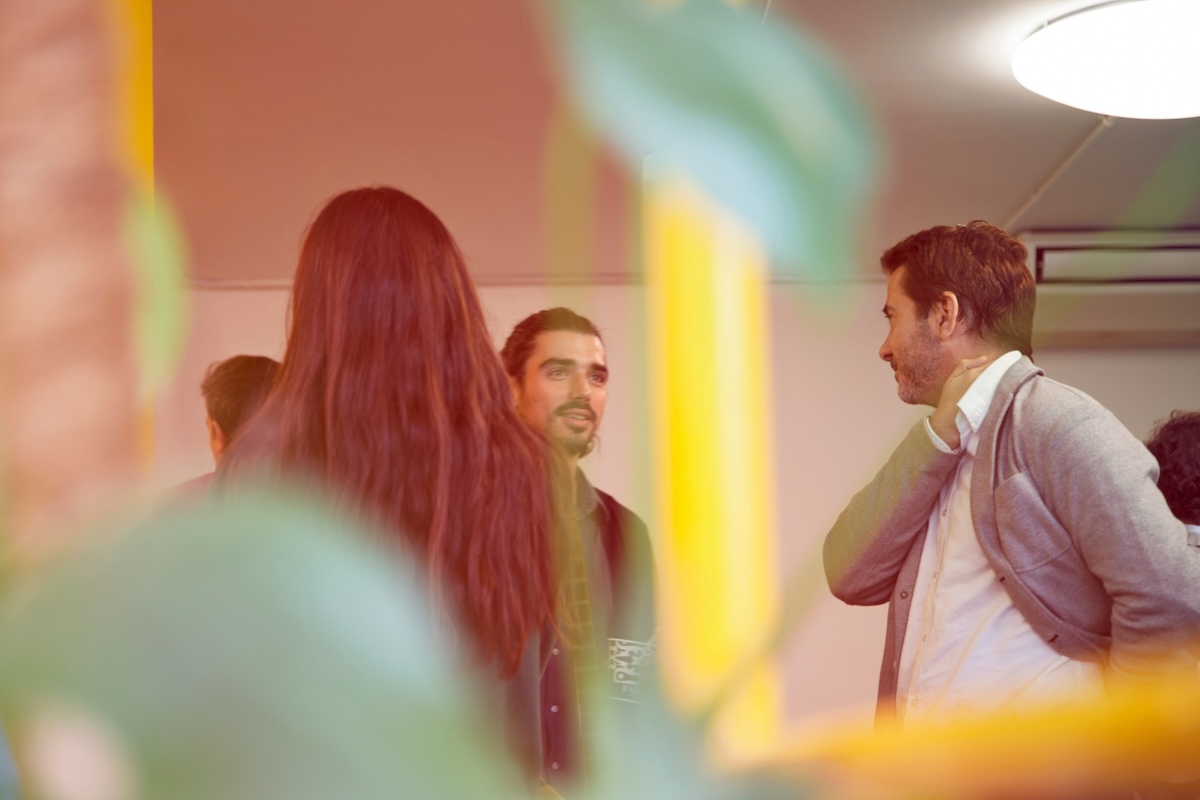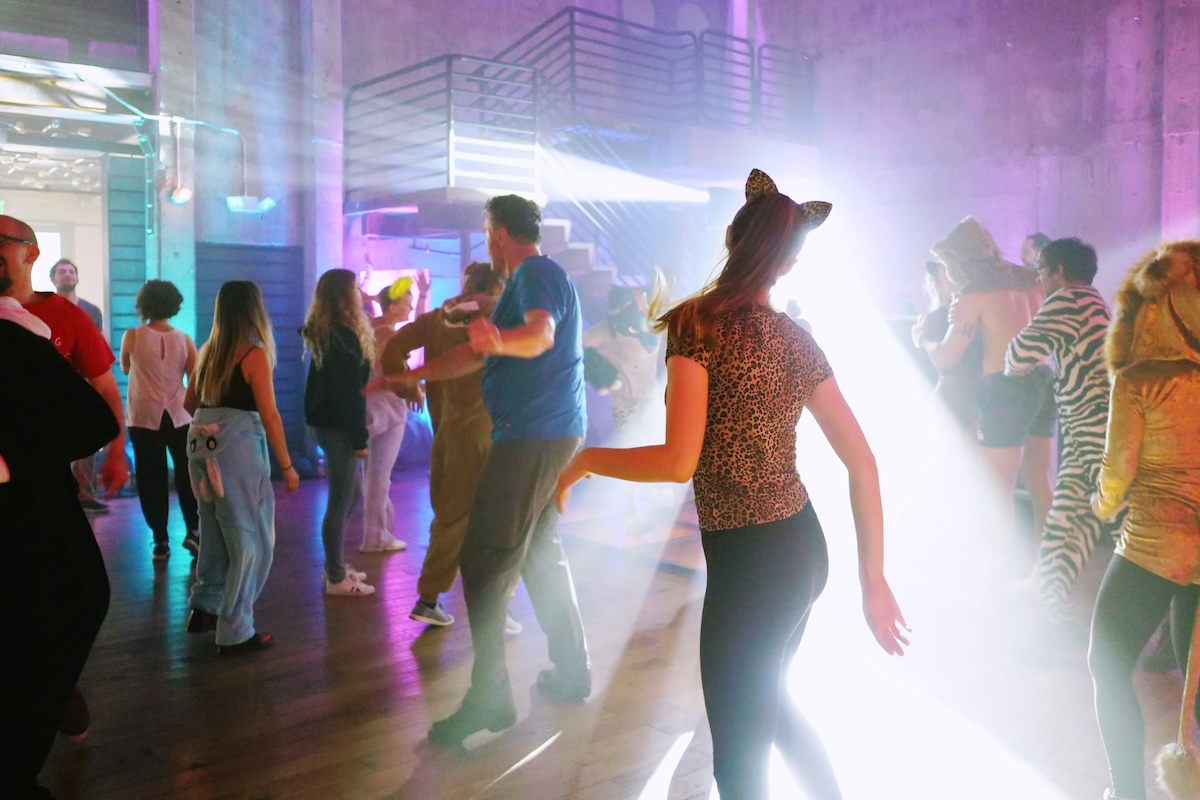Skift Take
What turns a good event into a transformative experience? We showcased some of the best events of 2023 at our virtual summit and asked event professionals in attendance about what they’re doing to change their own approaches to building a community.
This content was created collaboratively by Walton County Tourism and Skift’s branded content studio, SkiftX.
With so many invitations to register for a seemingly endless number of gatherings, what turns an event into a can’t-miss experience? During a recent Skift Meetings virtual summit, event leaders had an opportunity to look back at the best in-person and hybrid events of 2023. In addition to learning about the environment, education, and experience design that distinguished this year’s success stories, we polled the audience to get a sense of what they’ve been doing to achieve excellence at their own events. Read on to learn more about five key discussion points from the summit.
Turn Your Event Into a Place Where Everyone Feels at Home
When attendees aren’t at your event, there’s a good chance they feel alone. As people spend more time working from home and staring at their phones, it’s increasingly difficult to feel a true personal connection to anyone and anything. In fact, U.S. Surgeon General Dr. Vivek Murthy issued an advisory in the spring about the public health crisis of loneliness, isolation, and lack of connection.
Events have a crucial role to play in addressing that crisis by helping individuals find members of their tribes and creating a real community. Google Xi — a three-day program hosted in New York City this spring — set the gold standard with a Wheel of Belonging from Storycraft Lab that allowed participants to personalize their journeys based on their experience profile.
Additionally, Google’s experience design focused on neuroinclusivity with safe, sensory recovery areas that offered an escape from the noise that defines so many big events. Our poll revealed that 22 percent of summit participants have been following the same pathway with quiet zones that help everyone gain an essential sense of calm and well-being in the middle of the action. The bigger focus, though, is on creating activations with distinct groups in mind: 39 percent of respondents are leveraging on-site activations to help similar attendees find each other.
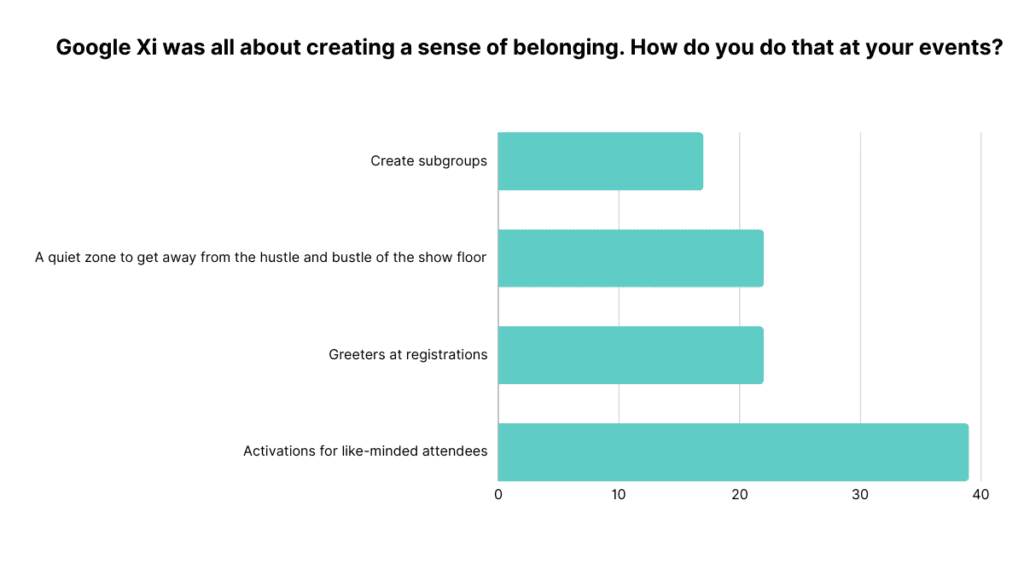

The Importance of Delivering on DEI
First, the good news: Loads of companies have made diversity, equity, and inclusion a top priority. Now, the bad news: A lot of them aren’t really making much progress. Event organizers, however, are committed to making big strides in this area, and summit poll participants indicated that they are revamping their education programs to ensure DEI is part of the curriculum. Sixty-five percent said their education offerings are part of their DEI strategy. They’re also working to put those who are doing DEI right in the spotlight: 18 percent of them are hosting DEI award programs.
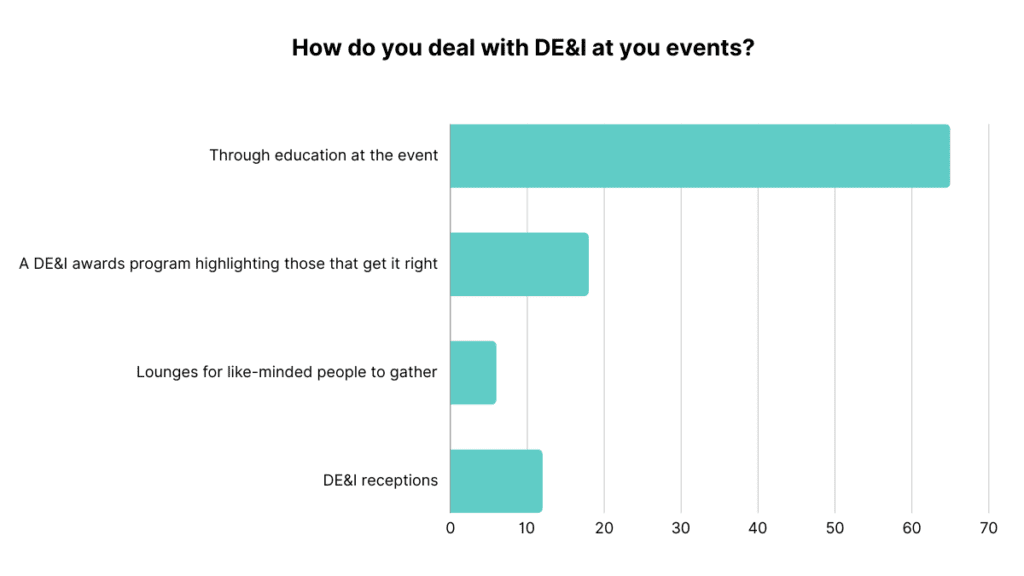

The smallest share — 6 percent — are offering lounges for like-minded groups to gather. This may reflect a lack of space, but it could just as easily come down to different views on what inclusion means. Some may prefer to avoid separate, siloed spaces in favor of gathering everyone together.
There Is a Lot of Room to Expand Site Selection
Convention centers and hotels are obvious choices for large meetings and events, but that doesn’t mean organizers need to stick to the same playbook for every gathering. Consider the World Experience Summit, which held its first edition at Phantom Peak in London. The venue — described as “part escape room, part immersive theater, part real-life video game” — is a reminder of the magic that can come with leaving the ballroom behind. However, many organizers are a bit skeptical about thinking outside the box: 30 percent of poll participants said they rarely think of “unusual” spaces for their events. Another 44 percent indicated that the unusual was sometimes a consideration (somewhere between a quarter and half the time). Only 22 percent indicated that they were often in the running.


As 2024 approaches, remember that the element of surprise can be a difference-maker for your audience. Taking attendees to an unexpected venue for an off-site can infuse a new level of energy into the experience. Don’t be afraid to take your group to a setting that might push the boundaries.
Attendees Want to Experience the Destination Like Locals
Blended travel is no longer a trend — it’s simply a way of life for business travel, which includes business events. Organizers are working to give attendees a better taste of the host destination, but they aren’t simply recommending the top 10 entries on Tripadvisor. More than half of poll respondents believe that their attendees are looking for off-the-beaten-path experiences with the local community.
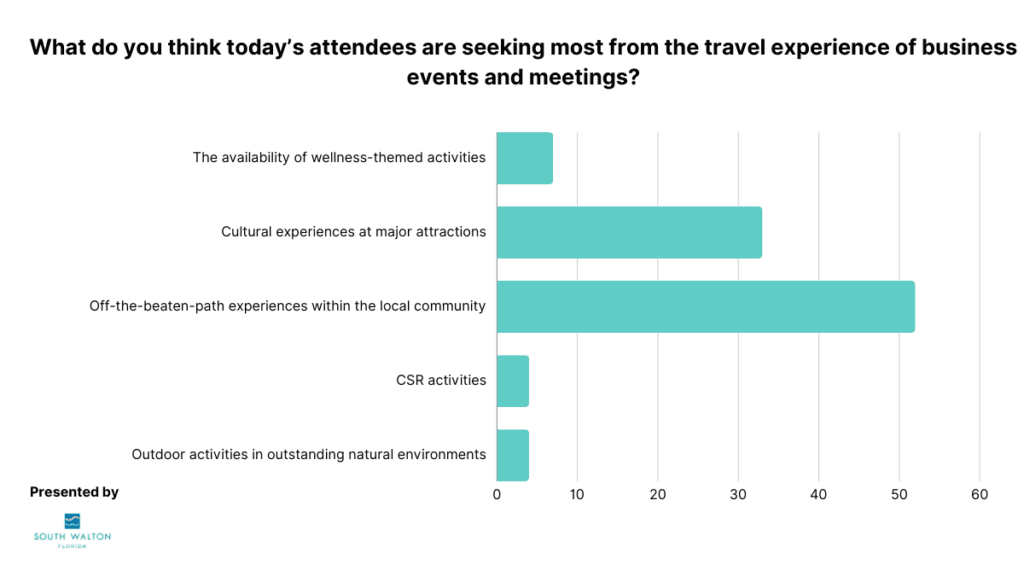

Those organizers are correct — and that trend is going to solidify as more young attendees flock to meetings and events. Recent data from American Express Travel shows that 79 percent of Gen Z and Millennial travelers want to experience a day in the life of locals wherever they are visiting. For South Walton, Florida — the official sponsor of the summit poll — that live-like-a-local mantra is one of the guiding principles when working with event organizers. While the beach is an obvious attraction, attendees can visit one of South Walton’s many small towns with their own unique charm, or savor some of the region’s lesser-known outdoor activities like hiking and biking trails in Topsail Hill Preserve State Park.
What Sets the Gold Standard
The summit looked at seven different events, all of which offered inspiration for a new kind of blueprint for success. Over the past year, some have feared that the industry will be overtaken by an over-saturation of ‘sameness’ as planners lean on AI content generators, which are known to borrow from existing material. Judging by the events that came out on top in our summit poll, it’s clear that creativity is alive and well in the event space. Among all three of the most popular event case studies, festivalization is back in a big way — along with all things experiential.
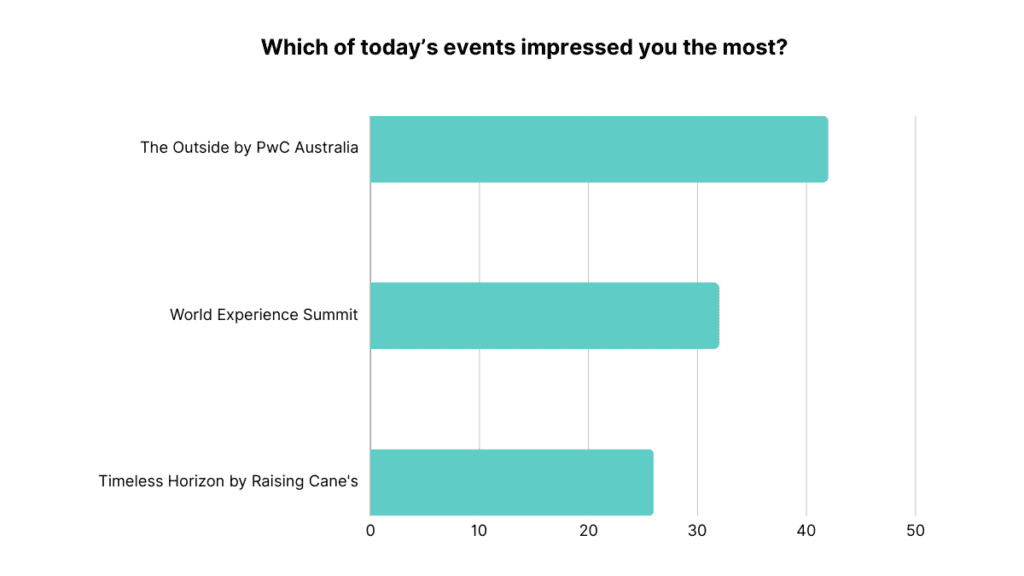

The Outside, a five-week program that welcomed PwC senior associates and managers for three-night intervals in May, was a refreshingly unplugged approach to learning with cold water therapies, biohacking, and First Nations experiences like smoking ceremonies and dancing with the Wonnarua Nation — in this way paying homage to 60,000 years of culture. One look at the highlight reel reveals something that looks less like a corporate training event and more like a music festival or yoga retreat.
Similarly, the World Experience Summit included “experience safaris” that had participants exploring multiple corners of London, and Raising Cane’s Timeless Horizon conference included a 2,300-person Easter egg hunt along with a truly ‘immersive’ sauce and ball pit.
Stress Less, Think Differently
With 79 percent of event organizers indicating that their jobs are more stressful today than they were before the pandemic, it’s clear that planning a meeting means dealing with an insane amount of pressure. Part of that pressure is likely due to the usual suspects — constantly-tightening budgets and too many responsibilities — but another reason that organizers are feeling overwhelmed comes down to the fact that it’s difficult to make an event stand out from a crowded landscape of meetings, conferences, and trade shows. In 2024, make it a goal to turn that stress into fuel for innovation. Perhaps your event will be in the spotlight 12 months from now.
This content was created collaboratively by Walton County Tourism and Skift’s branded content studio, SkiftX.
Photo credit:

